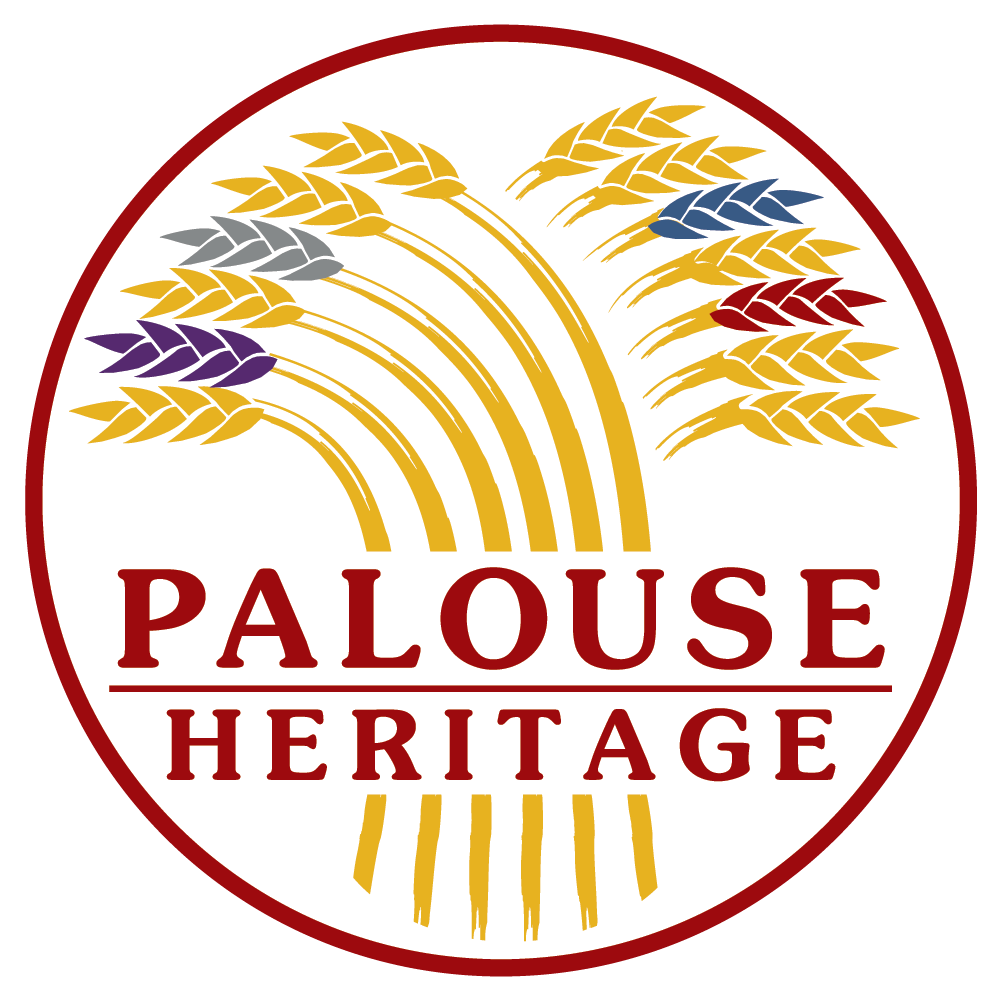This past week marked the beginning of our Palouse Heritage harvest as our first crop of organic Turkey Red bread wheat was cut at our partner Brad Bailie’s Lenwood Farms near Connell, Washington. We have been raising this legendary hard red bread grain for the past two years in order to carefully increase our seed stock, and finally this year we had enough for several acres of organic production at Brad’s farm since we needed space at our Palouse Colony Farm for the flavorful soft red variety English Redhead, also known as Red Walla Walla, which historically was used for pastries, biscuits, and other flatbreads as well as for crafting nutritious Old World Hefeweizen cloudy brews.
Harvesting Organic Turkey Red Wheat; Scene of the Great Yellow Jacket Harvest Battle
Turkey Red is the legendary grain long raised by our German ancestors in Eastern Europe where bread wheats had grown since time immemorial from the Great Hungarian Plain to the steppes of Russia and Ukraine. Prior to the introduction of Turkey Red to the Midwest in the 1870s, a winter variety sown in the fall, and its genetic spring-seeded cousin, Red Fife, an Eastern European relative that came to North American via Scotland, all wheat breads in early America and Canada were made from soft white flour sometimes mixture with low gluten milled rye, barley, or oats, or “thirded” combinations of these grains. The resulting baked goods were rather dense but still flavorful and served as the “staff of life” for countless families in eastern American and on the western frontier. Our elders here in the Northwest told us that their crops of Turkey Red as recent as the 1950s were too precious to sell like modern hybridized grains for national and world markets. Instead they held back sufficient quantities of Turkey Red to be milled at area flour mills in Colfax, St. John, and at tiny Pataha south of the Snake River near Pomeroy where historic Houser Mill has been substantially restored by the Van Vogt family with a portion of the main floor refurbished as a restaurant and museum.
"Our elders here in the Northwest told us that their crops of Turkey Red as recent as the 1950s were too precious to sell like modern hybridized grains for national and world markets."
Unexpected happenings often occur when commencing harvest and this year’s first round provided a couple interesting moments. After going a few dozen yards on our first round in Brad’s combine, I stepped behind the machine to blow on the ground and see if too much grain was being blown behind. Even the most advanced combine in this day of high tech threshing and electronic monitoring betrays some grain loss, but Brad’s John Deere was running very clean. I jumped back on and paused when entering the cab so we could check for any cracked grain going into the bulk tank where the grain is stored before unloading into a truck or in our case, large fabric totes capable of holding a ton. We had no sooner reached our arms back to retrieve a handful of grain that a wild onslaught of very angry yellow-jackets burst forth swirling around our heads! In an instant we received their stinging message of most likely disturbing a nest in the process of putting running augers and dumping grain into the bin, so we retreated back into the safety of the cab.
Marsh Hawk Stubble Nest
On the next pass around the field I noticed an enormous bird fly from the uncut grain we were approaching as the combine reel flailed along like a rapidly moving ferris-wheel. Brad immediately stopped the machine and said he it was one of several marsh hawks with whom he had shared his property. Brad is an advocate of natural growing systems and seeks to preserve native species, so was concerned that the hawk’s next was likely in the path of the combine’s next round. We descended the ladder and slowly approached the area in the uncut wheat from which the bird had taken flight. Sure enough there we found a trampled area about two feet in diameter with two white eggs resting in the center. Late July seems somewhat late for a hatch, but not being experts on marsh hawk habits we thought the eggs were likely still vital or they would not still be tended. So we returned to the machine and cut in a wide circle all around the next to keep it protected, and hoped no coyotes would find their way to the small golden sanctuary.
Later in the day I took a sample of the Turkey Red to the Connell Grain Growers substantial grain handling facility in Kennewick in order to get it tested for protein and moisture. The place is a massive complex located along the Columbia River and a several tractor-trailers filled with wheat were waiting in line to dump their loads in the elevator grates for storage in the adjacent concrete and metal silos. I was ably assisted by Kara Shibley, Angie Garcia, and Jose Carrea-Moya who shared my interest in heritage grains though our conversation was regularly interrupted by intercom calls and other office traffic attesting the incredible pace of harvest work inside such offices as well as out in the fields. The result came back in moments most satisfactorily, so we did it again with another sample and the numbers were identical—low 9.1% moisture, and very strong 13.5% protein—fully two percent higher than the average of modern hard red wheats then coming to the elevator. With that good news it was back to work and preparations to harvest our stands of soft red English Squarehead (aka Red Russian), Purple Egyptian hulless barley, and other grains scarcely seen in the region for over a century. The flavorful and nutritious adventure continues!
Jose Correa-Moya Testing Turkey Red Wheat for Moisture and Protein; CHS Elevator; Pasco, Washington







